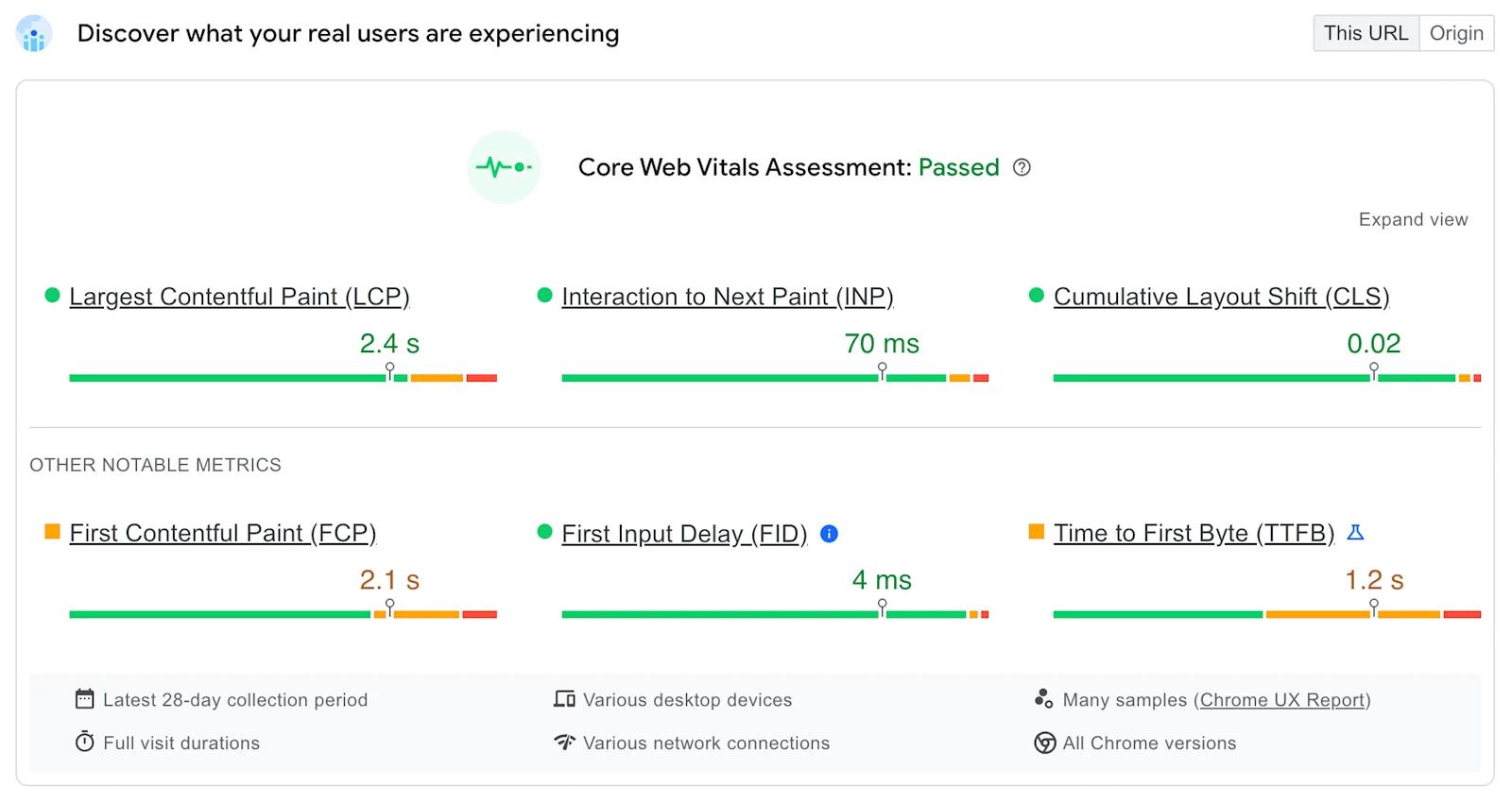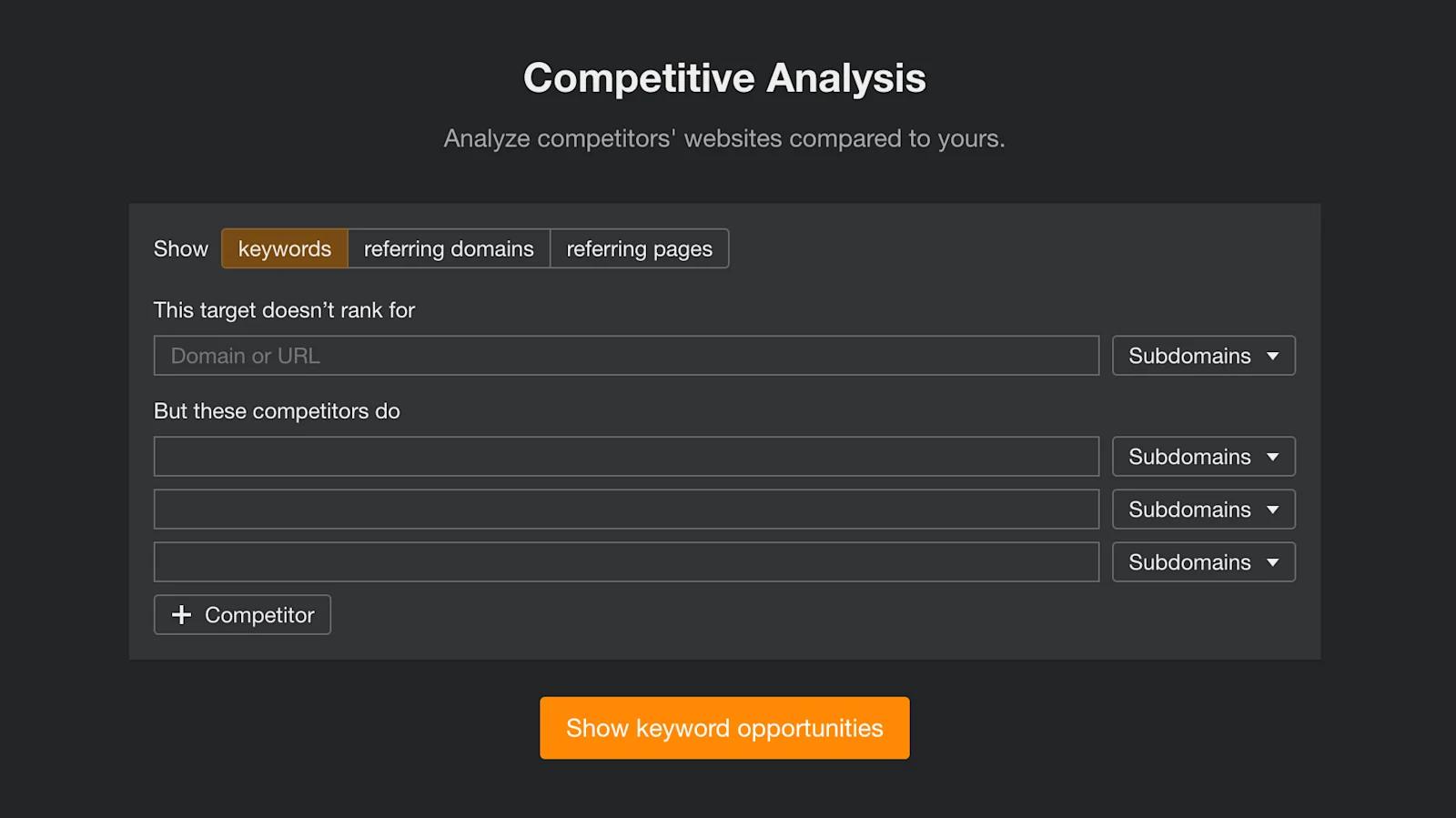Did you know that only 33% of websites pass the Core Web Vitals threshold? This means there's significant room for your business to outperform competitors in terms of website performance and user experience.
In this guide, we'll walk you through the essential steps to discover your competitors' strengths and weaknesses, helping you leverage opportunities to stay ahead.
In brief:
- Identify your top competitors and browse each website from a customer's perspective
- Evaluate your competitors' marketing tech stacks
- Analyze their UX and conversion optimization strategies
- Conduct a content gap analysis to identify areas where you can outshine them

Part 1: Identifying Competitors
The first step in conducting a competitor analysis is to identify and categorize your competitors. This process is crucial for gaining a thorough understanding of the competitive landscape and involves three main categories: primary, secondary, and tertiary competitors.
How To Identify Your Competitors
To identify your competitors, start by considering the following questions:
- Who are the businesses offering products or services similar to yours?
- Which companies are targeting the same target audience as your business?
- Are there any businesses that may not offer the exact same products or services but still compete for the same customers?
Categorize Your Competitors
Once you've compiled a list of potential competitors, it's time to categorize them. Divide your competitors into the following groups:
- Primary competition: These are the direct competitors that offer the same or very similar products and services as your business. They are likely vying for the same customers in your target market.
- Secondary competition: These are the indirect competitors that may not offer the exact same products or services, but still compete for the attention and dollars of your target audience.
- Tertiary competition: These are companies that currently offer different products or services but could potentially pivot or expand to address the same customer needs in the future.
Identifying and categorizing your competitors gives you a comprehensive understanding of the competition, equipping you to develop effective strategies to differentiate your business and appeal to your target audience.
Tech Stack Research
Uncovering your competitors' web technology arsenal can provide valuable insights into their marketing and content strategies, as well as their technical capabilities.
An average mid-market company can use nearly 185 different Apps in its tech stack. By identifying the content management system (CMS) and marketing tools they use, you can gain a deeper understanding of their approach to digital presence and engagement.
Identifying CMS and Marketing Tools
Understanding the technology stack your competitors use can provide valuable insights into their digital strategy.
Here is a little hack you may or may not know of – it's called Wappalyzer. Wappalyzer allows you to easily identify the tools any website is using, like a CMS, frameworks, A/B testing tools, CRMs, CDPs, and much more.
Here’s an example from our own website:

wappalyzer-webstacks
These insights can reveal the level of technical sophistication they possess and the resources they're willing to invest in their online presence.
Understanding their tech stack can also shed light on several critical areas:
- Lead Generation Tactics: How they attract and capture potential customers.
- Customer Nurturing Processes: The methods they use to engage and convert leads.
- Overall Digital Marketing Strategy: The broader strategy encompassing all digital touchpoints.
By gaining insights into the CMS and marketing tools your competitors use, you can better understand their approach and refine your own strategies to stay competitive.
Technical Performance

pagespeed-insights
Only 33% of websites pass the Core Web Vitals threshold. Analyze factors such as website speed, mobile optimization, and security protocols to gauge the quality of the user experience they're delivering.
Tools like Google PageSpeed Insights can provide valuable data on your competitors' technical performance, allowing you to identify areas where you might have a competitive advantage.
Thoroughly understanding your competitors' tech stack, including their CMS, marketing tools, and technical performance, allows you to identify areas where you can differentiate your own digital presence and provide a more compelling user experience.
This knowledge can help you refine your strategies and stay competitive in the digital landscape.
Part 2: Design Comparison
Conducting a thorough design comparison of your competitors' websites is a crucial step in understanding the aesthetic and modern design trends in your industry. Users take only 50 milliseconds on average to decide if they like your website and whether they'll stay or leave.
Closely evaluating the aesthetics, user interface, and conversion strategies employed by your rivals can provide valuable insights to shape your own website's design and user experience.
This analysis helps you identify what works well and what can be improved, ensuring that your website not only meets but exceeds industry standards.
Evaluating Aesthetics and Modern Design Trends
Examining your competitors' websites is essential for understanding current design trends and aesthetics in your industry. Assess the following design elements:
- Color schemes and palettes: Identify the colors and combinations that make the website appealing and how they align with branding.
- Typography choices: Note the font families, sizes, and styles used, and how they contribute to readability and overall design.
- Layout and grid structures: Look at the organization of content and how the layout enhances or detracts from user experience.
- Use of imagery, icons, and visual assets: Evaluate the quality and relevance of visual elements and their impact on the site’s appeal.
- Responsiveness and mobile optimization: Check how well the website performs on different devices and screen sizes.
From a high level, determine which websites look the best. Identify those that use modern design trends and have unique, memorable branding. Assess how these design choices align with the latest industry trends and best practices.
This analysis will help you identify opportunities to differentiate your website and create a more engaging, user-friendly experience for your target audience through superior branding and design.
Analyzing Conversion Strategies
Dive deeper into your competitors' conversion tactics by examining the following elements:
- Calls-to-action (CTAs): Analyze the placement, messaging, and design of your competitors' CTAs to understand how they are encouraging users to take desired actions. Where are competitors trying to get conversions? Are they driving towards a demo, a free trial, or a meeting?
- Lead magnets and opt-in forms: Explore the types of lead magnets, such as ebooks, webinars, or free trials, that your competitors are offering and how they are capturing user information.
- Checkout and purchase processes: Evaluate the user experience and friction points in your competitors' checkout and purchase flows to identify areas for improvement.
By comparing your competitors' conversion strategies, you can gain insights into effective CRO tactics that you can adapt and incorporate into your own website design and marketing efforts.
This analysis helps you understand where competitors are focusing their conversion efforts and how you can enhance your approach to drive better results.

Part 3: Content Gap Analysis
To gain a competitive edge, it's crucial to perform a thorough content gap analysis.
This process involves identifying areas where your competitors may be outperforming you in terms of content creation and marketing initiatives.
Reviewing your competitors' site architecture, navigation, and content marketing strategies can uncover valuable insights to enhance your own digital presence.
Reviewing Site Architecture and Navigation
Analyzing your competitors' site structure and navigation can reveal how they organize and present their content. Note how they differ from yours and what you can learn from them.
Pay attention to the following aspects:
- Information architecture: Understand how your competitors categorize and structure their content to cater to their target audience.
- Navigation experience: Assess the ease of use and intuitiveness of their website navigation, considering factors such as menu structure, internal linking, and user pathways.
- Content hierarchy: Observe how your competitors prioritize and feature different types of content, such as product pages, blog posts, and resource sections.
Comparing Content Marketing Initiatives
Examining your competitors' content marketing efforts can help you identify content gap opportunities and inspire your own content strategy.
To understand their approach, take inventory of all the content they have under their Resources. This could include things like:
- 📃 Blogs
- 📈 Case studies
- 📘 eBooks and other downloadable content
- 🗒 Templates
- 📹 Webinars and videos
- 🛠️ Interactive tools
- 🔠 Glossaries
- 🧑🏫️ Learn centers
- 🆚 Product comparisons
Conducting a comprehensive content gap analysis can provide valuable insights to optimize your website's structure, navigation, and content marketing strategy.
This will help you create more engaging and relevant content that resonates with your target audience and sets you apart from your competitors.
Part 4: SEO Research
Conducting thorough SEO research is crucial for understanding your competitors' online presence and strategies.
Identifying their top traffic-driving pages and content types can gain valuable insights into the topics and formats that resonate with your shared target audience.
Additionally, analyzing how your competitors are ranking for core terms related to your business services and solutions can help you develop a more targeted SEO strategy to improve your own visibility and organic traffic.
Identifying Top Traffic-Driving Pages and Content Types
Start by using SEO research tools such as Ahrefs or Semrush to analyze your competitors' websites and see the pages that are driving the most traffic. These tools allow you to see key metrics such as domain ratings, keywords, and traffic averages. We recommend using Ahrefs' Competitive Analysis tool to easily compare multiple websites against yours.

ahrefs competitive analysis
Look for patterns in the types of content that are performing well, such as blog posts, product pages, or educational resources. This information can inform your own SEO content strategy, helping you create similarly engaging and relevant material for your audience.
Ranking for Core Terms Related to Business Services and Solutions
Next, research how your competitors are ranking for the keywords associated with your business services and solutions. This analysis will reveal gaps in your own SEO efforts and highlight areas where you can focus your optimization strategies.
Understanding your competitors' SEO tactics helps you identify opportunities to improve your rankings and attract more qualified leads to your website.
Leveraging insights gained from analyzing your competitors' top-performing content and SEO tactics allows you to develop a more effective and targeted strategy. This approach boosts your online visibility and attracts the right customers to your business.
What is B2B Competitor Analysis?
B2B competitor analysis is the process of examining your business competitors to identify their strengths, weaknesses, and strategies. Understanding these elements helps companies position themselves effectively and find opportunities for growth.
Why is B2B Competitor Analysis Important?
The primary goal of B2B competitor analysis is to provide insights for strategic decision-making. This includes understanding competitors' market positions, recognizing market gaps, and predicting industry trends. By analyzing competitors' performance, pricing strategies, and customer engagement, you can refine your strategies to meet customer needs and maintain a competitive edge
Conclusion
You’ve analyzed your competitors - now what? The next step is to assess where you stand in comparison to the competition. Understanding your competitors' strengths, weaknesses, and engagement strategies with your shared target audience allows you to identify opportunities to differentiate your offerings, fill market gaps, and gain a competitive advantage.
Evaluate your position by identifying your greatest weaknesses and deciding what solutions you need. This could involve technical solutions such as a CMS migration, design enhancements like a refresh or full redesign, and strategy improvements in areas like content marketing, product marketing, SEO, and CRO.
The insights gained from this analysis can inform your decisions across all areas of your business. Ultimately, a comprehensive B2B competitor analysis empowers you to make informed, strategic decisions that drive business growth and success.
If you want more ideas for leveling up your B2B content marketing, check out our Website Recipes eBook, which features 35 creative ideas for growing your website.





